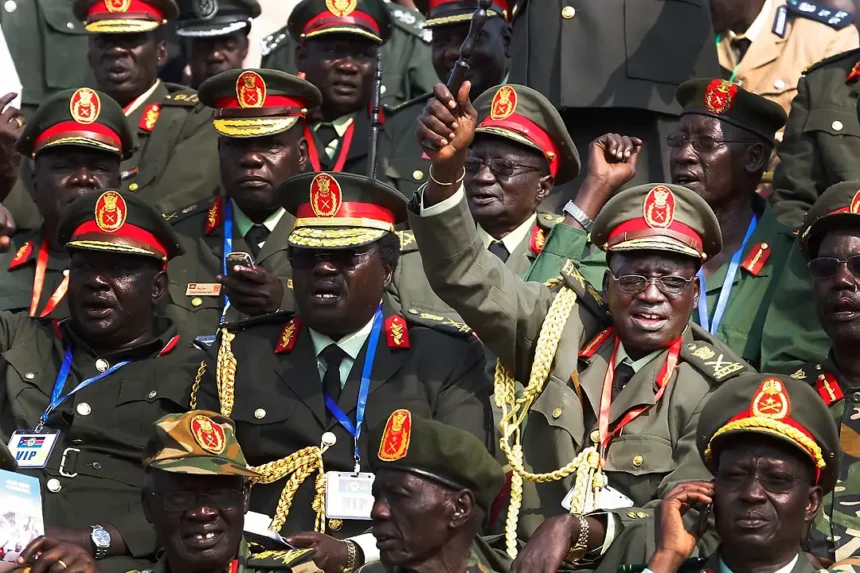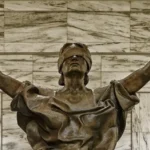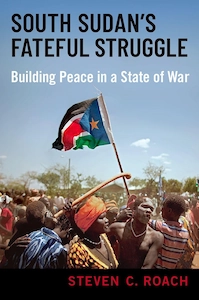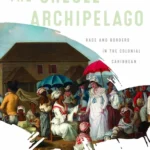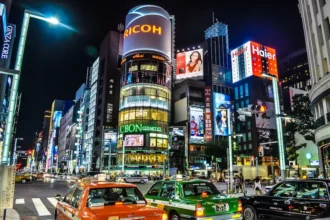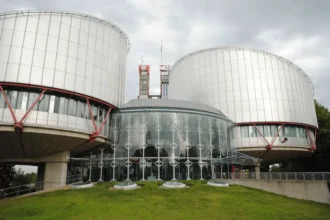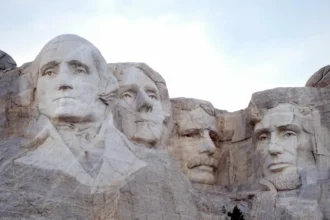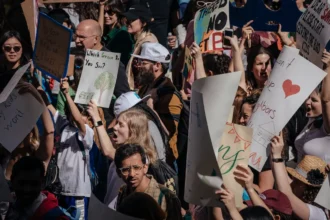About the book: South Sudan’s Fateful Struggle: Building Peace in a State of War, by Steven C. Roach, published by Oxford University Press, 2023. The recipient of Choice Magazine’s 2024 Outstanding Academic Title.
How did South Sudan’s peaceful secession from Sudan devolve so quickly into violence and protracted war? When I first visited the country in 2013, I spoke with many government officials and civilians about the troubling signs of political infighting. In July, for instance, President Salva Kiir had sacked his Vice President, Riek Machar, and inflation and unemployment rates were spiking because of the government’s decision to shut down the oil pipelines connecting South Sudan’s oil facilities to the Red Sea port.
Six months later, civil war would break out between government and rebel forces, displacing nearly 4.4 million people and killing nearly 400,000. In my book, I argue that the sudden onset of brutal violence was the result of several unresolved issues stemming from South Sudan’s colonial past, the second civil war in Sudan (1983–2005), and the Comprehensive Peace Agreement (CPA).
The militarization of society was not simply the product of years of war but the structural obstacle to erecting and developing new institutions to govern the region.
Much of my research into these issues is based on approximately 300 interviews conducted in 2019–2020 when I served as Country Expert for the United States Agency for International Development’s (USAID) work team in South Sudan. In addition, I draw on a number of primary documents and surveys to show how the prolonged instability and violence created a situation in which the leaders pinned their political survival on maintaining such instability.
To understand this paradox of power—of using instability to hold onto power, or what I call “building peace in a state of war”—I explore in considerable detail the rise of the country’s informal patronage networks, the traumatic effects of war, the consolidation of power in one political organization, and the failed international efforts at bringing peace and democracy to the country.
Colonial Legacy
After British troops drove out the Mahdist forces (an Islamic nationalist movement) from Sudan in the 1890s, Britain and Egypt entered into the Anglo-Egyptian Condominium, a partnership between the two countries that allowed Britain to use its military influence over Egypt to shape affairs in Egypt and Sudan.
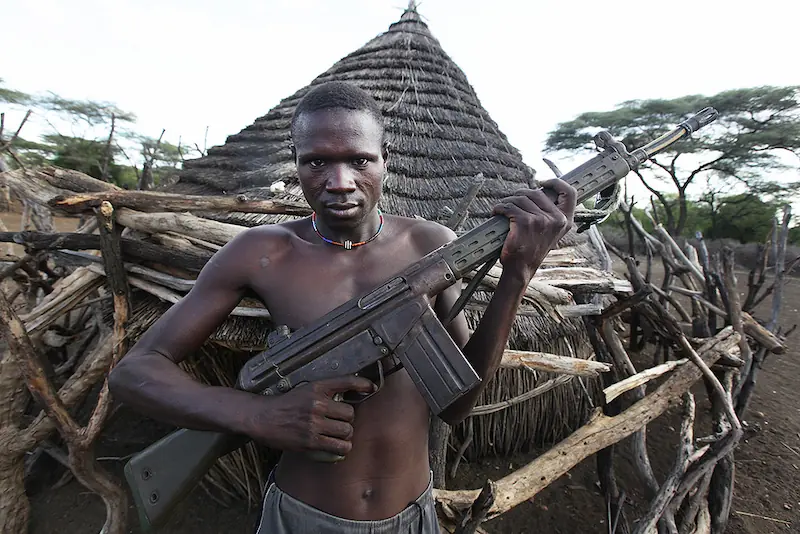
In southern Sudan, the United Kingdom (UK) implemented a policy of indirect rule in which it devoted few, if any, resources to administer the affairs of the southern Sudanese. In northern Sudan, however, the British showed more interest, investing most of their resources in its infrastructure. The disparity in interest was not simply strategic: it also underscored the racist attitudes toward the southern Sudanese, whom the British officials saw as backward and savage.
The British also sought to manipulate the political identities of tribal groups, particularly between the two majority tribal groups, the Dinka and the Nuer.
The aim, it seemed, was to prevent the tribal groups from uniting to oppose British rule. But in pacifying the southern Sudanese, the British justified their economic and social neglect of the southern region in Sudan. The legacy of neglect and division would eventually lead to the formation of two nationalist identities: the northern and southern Sudanese.
Sudan’s Independence and Civil War(s)
In chapter 2, I turn attention to the problematic legacy of British colonialism. In 1956, the Sudanese people finally gained independence from the British. Although the event marked the end of British oppressive rule in Sudan, it also introduced a cycle of violence between the North and the South. In fact, the new Sudanese government adopted many of the same brutal policies of policing the cities in the South (i.e., unlawful detentions, abuse, and indiscriminate use of violence).
In the town of Torit, for example, Sudanese troops from the Equatorial Corps rebelled against government troops, leading to the massacre of nearly 350 South Sudanese. The South Sudanese rebels who had managed to escape the government’s counteroffensive proceeded to form the Anyanya (translated: “snake venom”), a southern militia that fought for secession in the first civil war in Sudan (1962–72).
The Anyanya saw violence as a vehicle toward liberation, or what Franz Fanon, a revolutionary and leading intellectual voice of the French-Algerian War (1955–1962), termed “the absolute means of violence.” This uncompromising faith in secession resulted in a dragged-out war, allowing a more moderate faction of the southern resistance movement to negotiate a peace agreement with Gaafar el-Nimeiri, the President of Sudan, which established autonomous rule in the South.
The agreement created a regional assembly, called for the full disarmament and retraining of the Anyanya, and enabled Nimeiri to exclude the South from key projects that affected the southern peoples, including the construction of the Jonglei Canal that would divert the flow of the White Nile. By 1983, Nimeiri escalated his meddlesome rule by imposing Sharia (Islamic law) on the largely Christian South and by dividing the southern region into three separate provinces.
Nimeiri’s oppressive policies soon caused the southern region to revolt. John Garang Marbior—a colonel in the Sudanese Army who had deserted his battalion in the South—established the Sudan People’s Liberation Movement (SPLM). A member of the Dinka ethnic group, Garang was a dynamic and charismatic leader who envisioned a “New Sudan,” or a democratic and pluralistic Sudan to counter the “Old Sudan,” an oppressive, authoritarian Sudanese state. From 1983 to 1987, he was able to consolidate his army and launch successful attacks against Sudan’s Armed Forces (SAF) in the Bahr El Ghazal and Central Equatoria provinces.
But Garang’s authoritative command also created ethnic and political tensions inside the Sudan People’s Liberation Movement/Army.
By 1991, the SPLM had split into two groups: the SPLM-Nasir, led by Riek Machar and Lam Akol, and the SPLM-government, led by Garang. Both accused the other of betraying the southern cause, which, for the Nuer-based Nasir faction, meant secession from Khartoum (not a reformed, new Sudanese state) and upholding the human rights of all ethnic groups.
As it turned out, both sides were guilty of committing human rights abuses, collecting booty, stopping humanitarian aid, and levying taxes on the borders they controlled. Yet it was Machar, a commander and member of the Nuer group, who, in joining forces with the Sudanese government in 1996, became isolated, persona non grata, to his own people. In 2001, Garang reluctantly permitted him to rejoin the SPLM, which, after 10 years of internal fighting, was once again unified and determined to end the war between the North and South.
A Kleptocratic State
In 2005, the two sides signed the Comprehensive Peace Agreement, bringing an official end to the second civil war in Sudan. The CPA was a sweeping document that included protocols on the resolution of border disputes in administered areas where oil had been discovered, such as Abyei, and provided the option for the southern Sudanese to either unite with Sudan or secede from it. The SPLM chose the latter, and in consolidating its power through the 2010 elections, set the country on a path toward independence.
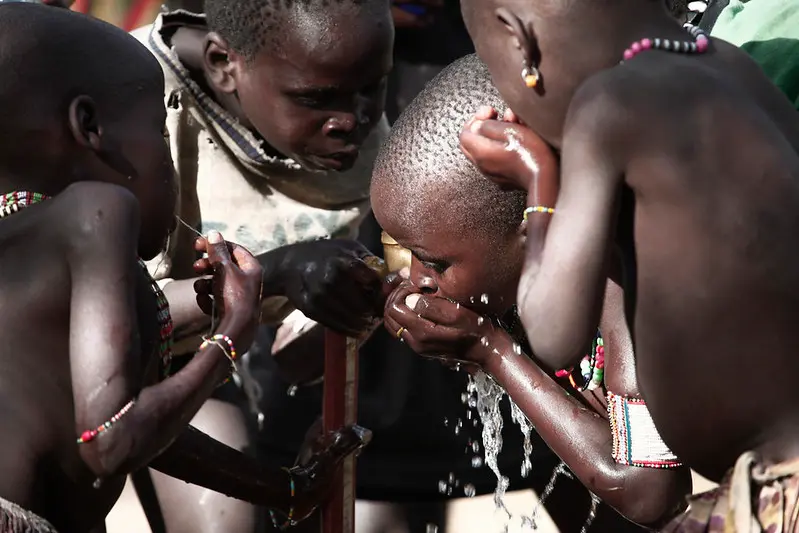
But the transition to statehood was anything but smooth. In fact, as I show in chapter 3, the transition was troubled from the start, not simply because of deep internal divisions within the SPLM, but also because the southern leaders and people were ill-prepared to make the transition. Many of the regional leaders and officials seemed to shirk their sense of civic responsibility by treating the transition as an opportunity to enrich themselves from the massive influx of oil revenue.
Within a couple of years, many spacious homes appeared on the outskirts of Juba, the capital of the country, where SUVs lined the streets. As it turned out, much of the oil revenue was never invested in the development of infrastructure; rather, it went directly into the pockets or personal accounts of government leaders. In 2011, for example, it was estimated that only 60 kilometers of road in the country were paved.
I show how government leaders came to rely on loose, informal patronage networks to shore up their political base of support.
The endemic corruption divested the country of the needed social capital (functioning networks or communities) to build its institutions. Moreover, there was little way of accounting for the lost money. In 2013, Kiir had set up an investigative commission to look into the accusations of bogus government contracts, but the commission never carried out any formal investigations.
There simply was no will to investigate since the investigators themselves were corrupt and did not wish to indict themselves. In the end, the corrupt leaders saw peace not as a time to build their institutions, but to take what they could get out of fear that war would return. The years of war had thus bred an instinct for political survival that would shape the country’s brute governance and divisive patronage networks.
Militarized Patronage
The central looming question I tackle in chapter 4 is how national unity and stability can ever be achieved when its leaders reap profits from dividing the country along ethnic lines. Mahmood Mamdani, a prominent political scientist, argues that this ethnic dimension of patronage can be traced to British colonial policy that divided and fueled conflict among the many tribal groups in the southern region of Sudan.
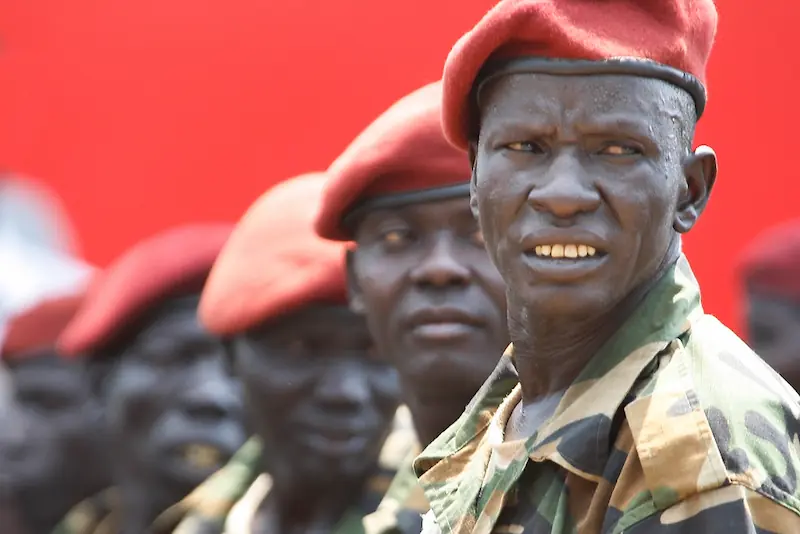
In the chapter, I show how government leaders came to rely on loose, informal patronage networks to shore up their political base of support. Patronage in South Sudan, as well as in other deeply divided developing countries such as the Democratic Republic of the Congo, Burundi, and the Central African Republic, refers to a network of groups competing for and financing soldier loyalty largely along ethnic lines.
South Sudan’s leaders still rely principally on military skills and instincts to govern.
“Monetized patronage,” to borrow Alex de Waal’s term, is a political market driven by fear and economic incentive financed largely by stolen money and goods. In Kiir’s case, it involves a partial allocation of the national budget to pay his Dinka soldiers and officials. Patronage, in short, diverts money away from financing public goods and developing infrastructure to shoring up militias along tribal lines, leading to the militarization of society.
Militarization underscores the primacy of military tools to govern a country. In my view, monetization only captures the primary influence of economic incentives. To address this limit in patronage studies, I formulate the concept of “militarized patronage” to show how militarization actively (and autonomously) harnesses intimidation, military discipline, and fear to the patronage process.
As mentioned above, South Sudan’s leaders still rely principally on military skills and instincts to govern. Peter Nyaba, a member of the SPLM, was one of the first scholars to show how such militarization instilled a lack of compromise in the leaders. For Nyaba, such militarization is why a truly autonomous political wing of the SPLM never emerged to rule the country. In effect, the militarization of society was not simply the product of years of war but the structural obstacle to erecting and developing new institutions to govern the region.
In my book, I propose a number of broad recommendations for rethinking the country’s future.
Clearly, much of the blame rests on outside powers and international donors such as the Troika and the United Nations, which treated South Sudan as a strategic asset for countering a Muslim, hostile North (i.e., Islamism).
In effect, the key strategic international donors ignored what was the root cause and effect of South Sudan’s corruption and ultimate failure: its tribal-based patronage system that took shape because, not in spite of, the many human rights abuses perpetrated by the ruling elite. By December 2013, these factors would help ignite civil war in South Sudan between the Sudan People’s Liberation Movement–Government and the Sudan People’s Liberation Movement–in Opposition (SPLM-IO) led by Machar.
Human Rights Violations
In 2014, at the height of the civil war, the government set up the Crisis Management Committee to raise awareness of the economic and political effects of the civil war. But the commission, it turned out, did little, if anything, to investigate corruption. In addition, the millions of dollars allocated to the committee could not be accounted for. At the same time, more evidence was surfacing of the national government’s and rebel forces’ human rights abuses during the civil war.
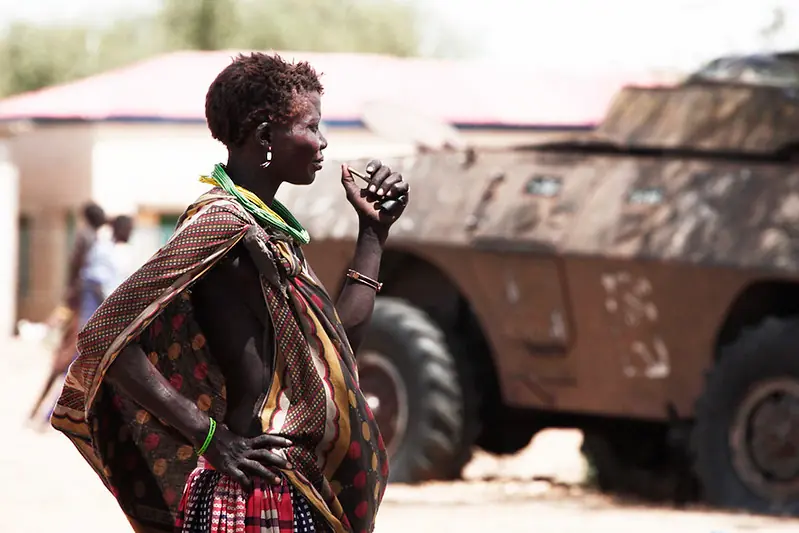
The Human Rights Council, the African Union Commission of Inquiry, and the UN Panel of Experts on South Sudan documented widespread abuses by both government and rebel forces. In their 2016 report, for instance, the Human Rights Council concluded that there was substantial evidence linking the government to rogue militia groups that had carried out gang rapes and mass killings.
The national government was also reported to have sent troops to primary schools where they forced students as young as 8 years old to join the army—this despite being a member of the Rights of the Child Convention. In a survey that my colleague and I conducted in Juba in 2015, nearly 60 percent of those surveyed indicated that it was permissible to conscript children during times of war; yet the same percentage of those surveyed said that it was wrong to recruit children during times of peace. Such measured acceptance of violence, we concluded, was the product of the deep cultural roots of violence in the country.
If the absence of justice mechanisms is needed to transition to peace and promote trust in negotiations, what should be the role of justice in promoting long-term peace and stability?
As one South Sudanese judge told me, there are still many “repugnant cultural norms” that are practiced in South Sudan (albeit mostly in the countryside). This includes child marriage (dowry rites), gender-based violence, and child conscription. Changing these norms has become a priority for many civil society organizations seeking to change the scope and substance of customary law, which is stipulated in the Transitional Constitution of South Sudan. In particular, it has meant integrating local customary law (which is unwritten) with statute law that codifies human rights protections. The South Sudan Law Society, for instance, has trained several of the tribal chiefs to apply the human rights norms of statute law in their judgments regarding tribal affairs.
Their efforts, however, have done little to change the national cycle of violence. For me, this raises the looming issue of whether the country can ever realize moral and legal accountability of the perpetrators of violence and, in the process, end what has become a deep-seated “culture of impunity,” or lack of effective legal and moral deterrence mechanisms, which only encourages human rights abuses.
Criminal Accountability
In the second part of chapter 5, I discuss in detail some of the challenges of holding the perpetrators of human rights abuses accountable. In 2015, both warring parties signed the Agreement on the Resolution of Conflict in South Sudan that established a proposed Hybrid War Crimes Court in South Sudan (HCSS) and the Commission for Truth, Reconciliation and Healing (CTRH).
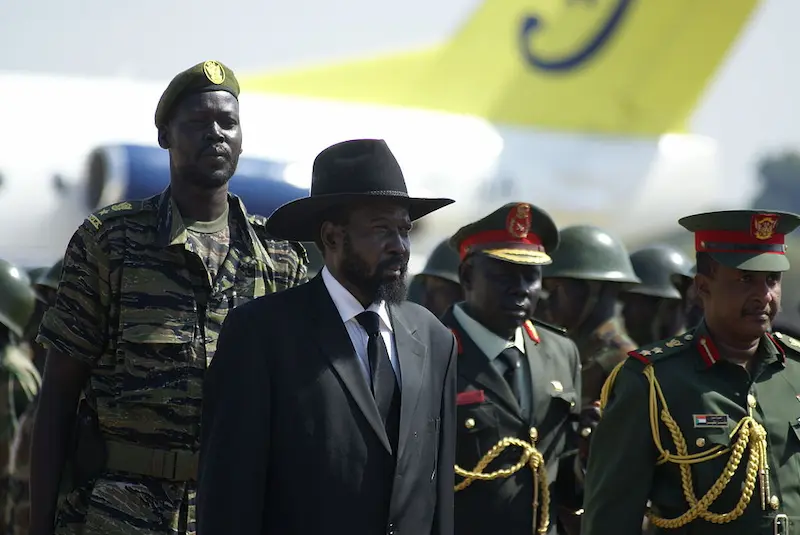
Kiir stated his position on the matter in a New York Times article (Machar was listed as a coauthor but denied any involvement in writing the article) published in July 2016. Here he argued that while establishing a war crimes court would destabilize the country, a truth commission sponsored by the state would effectively address atrocities of the past, or what Kiir has touted as the process of forgiving to forget.
Kiir’s plea came on the heels of the national assembly’s yes vote on establishing a war crimes court. But fearing that he himself could be tried for war crimes, he allowed the bill to sit on his desk before finally signing it in early 2021. Many expect him to do what he has done with the elections and the permanent constitution: delay its implementation (which he has done).
Not surprisingly, more have turned their attention to what the international and regional actors can do to pressure him to implement the court. For its part, the African Union has urged Kiir to implement the court, yet has done little to utilize its own resources to hold the perpetrators accountable. The African Union Peace and Security Council (AUPSC), for instance, reserves the power to initiate a war crimes court. But given the AU’s deference to African state leaders, the AUPSC seems unlikely to exercise this option.
How is one to deter the leaders from inflicting the same violence when the violence itself enabled them to stay in power?
The delays and unwillingness inform a much larger debate on peace versus justice in the country. Human rights activists, for example, argue that peace cannot be divorced from the implementation of justice mechanisms (i.e., war crimes courts and truth commissions). To administer justice is to actively promote peacebuilding since it means deterring future leaders from committing more crimes and sowing more violence.
Yet for the advocates of separating peace from justice, such as diplomats, excluding justice from peace agreements is about showing prudent restraint—that is, refraining from imposing justice in conflict-sensitive negotiations. Peace, in this sense, is about removing the moral obstacles in peace negotiations, or promoting negotiations with the leaders who may be the targets of justice. The trouble with this position of restraint, however, is that in downplaying or delaying justice, it also may encourage leaders to operate above the law.
Which begs an important question: if the absence of justice mechanisms is needed to transition to peace and promote trust in negotiations, what should be the role of justice in promoting long-term peace and stability? As I argue in chapter 6, the South Sudanese leaders have learned to benefit from instability by delaying justice and elections. Their delaying tactics are part of a larger strategy to prevent the country from achieving the long-term stability and unity that would challenge their political survival. This is why pressure from outside international donors continues to be vital, and why imposing justice and moral accountability is the only likely solution to achieve just peace.
Still, the question remains: How is one to deter the leaders from inflicting the same violence when the violence itself enabled them to stay in power? The challenge, I argue in the book, is that South Sudan never had its own opportunity to establish a social contract that would allow the government to be shaped by the will and consensus of the people. The CPA was flawed in this respect since it constituted an effort by the Troika alone to establish a democratically accountable government. The fact that the leaders were never trained civically to take on this task suggests they never offered their voluntary consent to be ruled by the terms of the CPA.
Striving for Elusive Long-term Stability
Throughout much of its statehood, South Sudan has been manipulated by regional and international forces. Much of the underlying challenge was (and is) about addressing the effects of its own internal fighting and deep-seated corruption. But in 2023, civil war broke out in Sudan between the Sudanese Armed Forces (SAF) and the Rapid Support Forces (RSF).
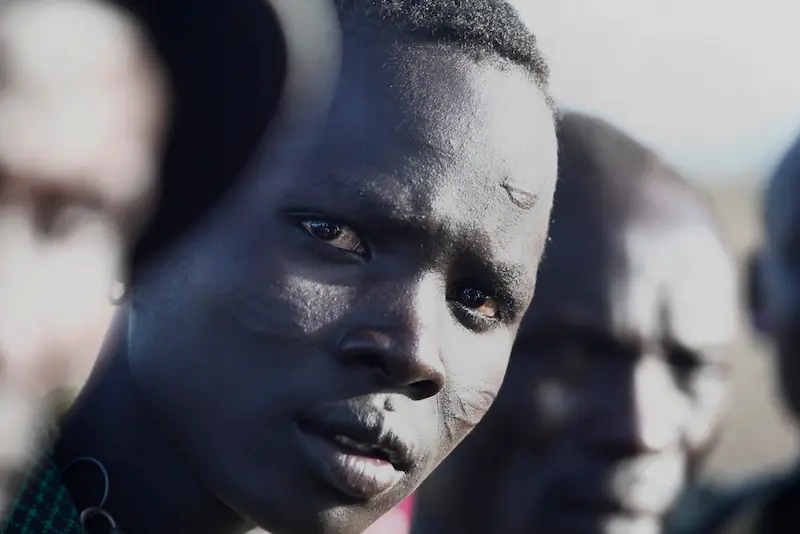
The fighting led to severe damage to one of the two central pipelines that carry oil from South Sudan to the Port of Sudan. The damaged pipeline accounts for nearly 60 percent of the oil revenue for South Sudan, threatening the very ability of South Sudanese leaders to survive politically.
It is easy to lose sight of the fact that South Sudan has been at war for most of its existence as a state. But there is also potential for the country to develop its institutions and to carry out the long-awaited justice that has eluded it.
In my book, I propose a number of broad recommendations for rethinking the country’s future. One of these concerns bolstering certain sectors of civil society so that more active pressure can be brought to bear on the leaders. Through USAID, the United States has funded many civil society organizations that have focused on improving medical care, increasing efficiency in the agricultural sector, and addressing the sources of human rights abuses. For its part, the UN needs to transition back from its focus on the protection of civilians to peacebuilding.
Another recommendation involves rethinking the nature of the country’s social contract or, in this case, making the country’s institutions more resilient and responsive to the needs of the people and ending what I call the state of war in the country. Adopting a new permanent constitution that restructures its institutions remains essential in this respect, since it aims to invest the people with the power to finally throw out their corrupt rulers and see justice served.


